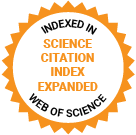Journal of Medical Internet Research
The leading peer-reviewed journal for digital medicine and health and health care in the internet age.
Editor-in-Chief:
Gunther Eysenbach, MD, MPH, FACMI, Founding Editor and Publisher; Adjunct Professor, School of Health Information Science, University of Victoria, Canada
Impact Factor 5.8 CiteScore 14.4
Recent Articles

There is burgeoning interest in the application of neuroscientific technology to facilitate meditation and lead to beneficial psychological outcomes. One popular approach is using consumer-grade neurofeedback devices to deliver feedback on brain targets during meditation (mindfulness-based neurofeedback). It is hypothesized that optimizing brain targets like alpha and theta band activity may allow meditators to experience deeper mindfulness and thus beneficial outcomes.

Canadian public safety personnel (PSP) report high rates of mental health concerns and barriers to treatment. PSPNET is a clinical research unit that offers internet-delivered cognitive behavioral therapy (ICBT) that is free, confidential, and developed with and for PSP. Treatment outcomes are promising with clinically significant symptom improvement (eg, anxiety, depression, and posttraumatic stress) and favorable treatment satisfaction. While these results are promising, research has yet to explore ways to optimize therapist-guided ICBT for leaders within public safety. Optimizing ICBT for leaders is particularly important given their widespread organizational impact.

The global COVID-19 pandemic’s mental health impact was primarily studied in the initial year of lockdowns but remained underexplored in subsequent years despite evolving conditions. This study aimed to address this gap by investigating how COVID-19–related factors, including nationwide COVID-19 deaths and incidence rates, influenced mental health indicators over time.

The need for health care underpins health care service provision and serves as the foundation for enhancing service capacity and allocating resources. Health care needs are influenced by health, social, and economic conditions and may exhibit different characteristics over time. However, previous studies have primarily focused on specific populations or types of needs, overlooking the diversity and complexity of residents’ health care requirements. Furthermore, as informatization becomes a defining aspect of modern social development, the impact of internet utilization on the co-occurrence of health care needs remains unclear.

Mobile app–based interventions are viable methods of delivering perinatal care support to parents. A mobile app–based intervention entitled Parentbot–a Digital Healthcare Assistant (PDA) was developed and evaluated via a randomized controlled trial. PDA aimed to provide informational, socioemotional, and psychological support to parents across the perinatal period. As developing such interventions is resource intensive, it is important to evaluate participants’ use and the components that are appreciated by them.

Effective physician-patient communication is essential in clinical practice, especially in oncology, where radiology reports play a crucial role. These reports are often filled with technical jargon, making them challenging for patients to understand and affecting their engagement and decision-making. Large language models, such as GPT-4, offer a novel approach to simplifying these reports and potentially enhancing communication and patient outcomes.

Motor neuron disease (MND) is a progressive and incurable neurodegenerative disease. The Amyotrophic Lateral Sclerosis Functional Rating Scale-Revised (ALSFRS-R) is the primary clinical tool for assessing disease severity and progression in MND. However, despite its widespread use, it does not adequately capture the extent of physical function decline. There is an urgent need for sensitive measures of disease progression that can be used to robustly evaluate new treatments. Measures of physical function derived from digital devices are beginning to be used to assess disease progression. There is value in establishing a consensus approach to standardizing the use of such devices.



The COVID-19 pandemic was extremely disruptive to clinical practice and research. Given older adults’ increased likelihood of chronic health concerns, limited resources, and greater risk for adverse outcomes of COVID-19, access to research participation during this time was critical, particularly to interventions that may impact health conditions or behaviors. Fortunately, the implementation of personalized, digital research trials during the pandemic allowed for research and intervention delivery for older adults to continue remotely, resulting in feasibility findings that can benefit researchers, practitioners, and the broader older adult population.

Digital health interventions (DHIs) have the potential to improve health care and health promotion. However, there is a lack of guidance in the literature for the development, refinement, and prioritization of key performance indicators (KPIs) for the evaluation of DHIs. This paper presents a 4-stage process used in the Gravitate Health project based on stakeholder consultation and consensus for this purpose. The Gravitate Health consortium, which comprises private and public partners from across Europe and the United States, is developing innovative digital health solutions in the form of Federated Open-Source Platform and G-lens to present users with individualized digital information about their medicines. The first stage of this was the consultative process for the development of KPIs involving stakeholder (Gravitate Health project leads) consultations at the planning stages of the project. This resulted in the formation of an extensive list of KPIs organized into 7 categories. The second stage was conducting a scoping review, which confirmed the need for extensive stakeholder consultation in all stages of the KPI development, refinement, and prioritization process. The third stage was a period of further consultation with all consortium members, which resulted in the elimination of 1 category of KPIs. The fourth stage involved using the Delphi technique for refining and prioritizing the remaining 6 categories of KPIs. It is unusual to use this methodology in a nonresearch exercise, but it provided a clear consultative framework and structure that facilitated the achievement of consensus within a large consortium of 250 members on a substantial list of KPIs for the project. Consortium members ranked the relevance and importance of each KPI. The final list of KPIs provides substantial indicators sensitive to the needs of a broad group of stakeholders that are being used to capture real-world data in developing and evaluating DHIs.
Preprints Open for Peer-Review
Open Peer Review Period:
-
Open Peer Review Period:
-
Open Peer Review Period:
-

















